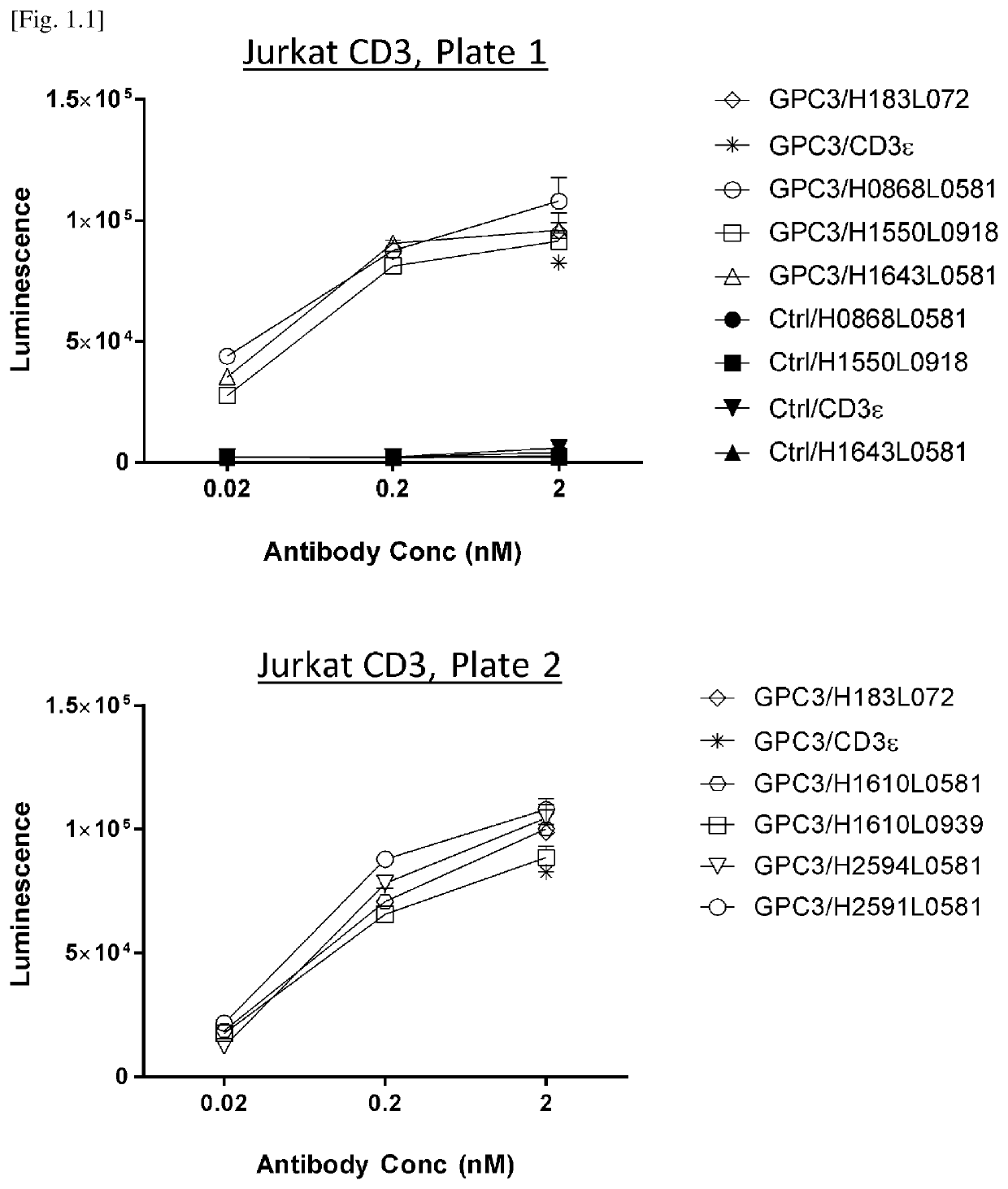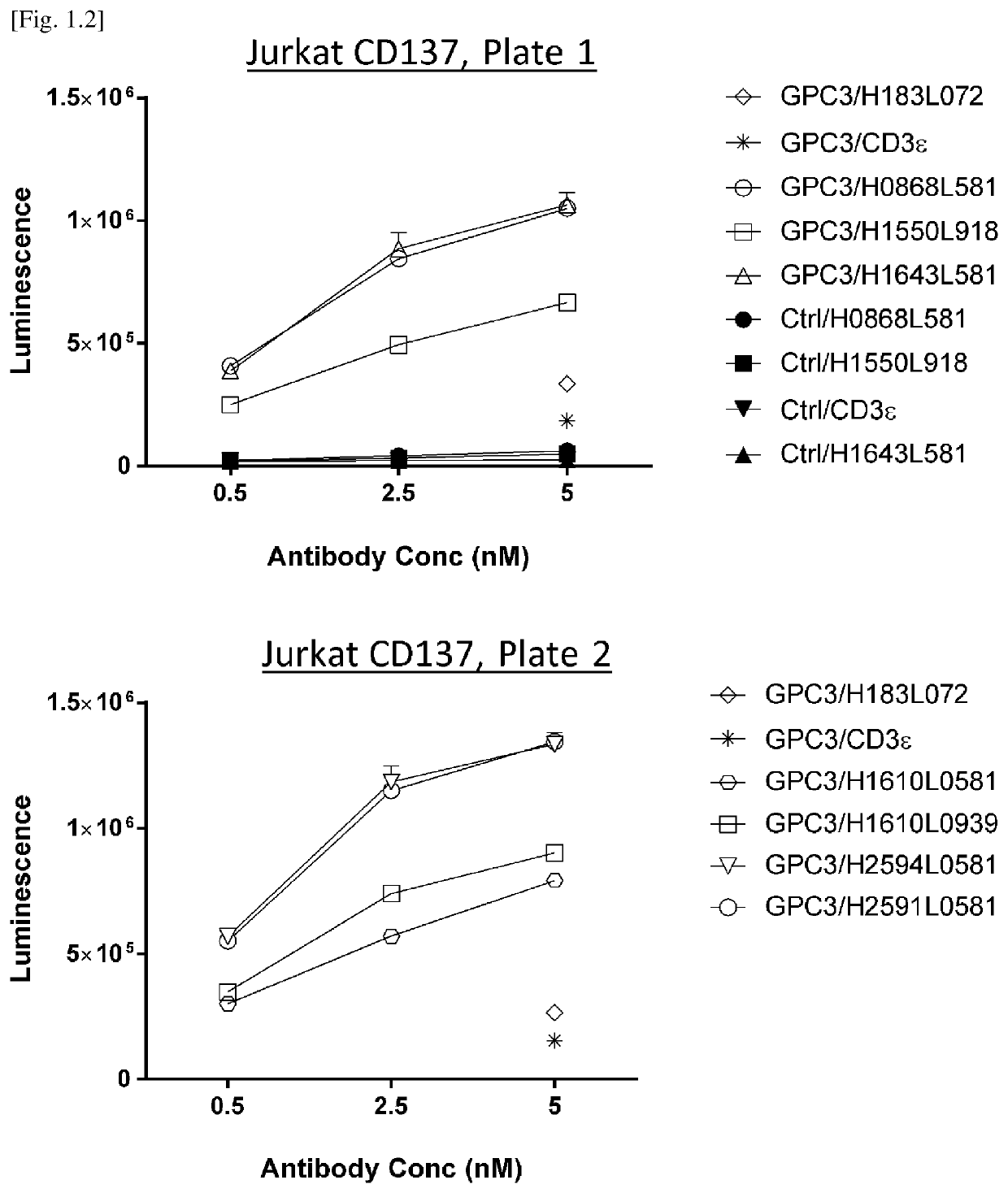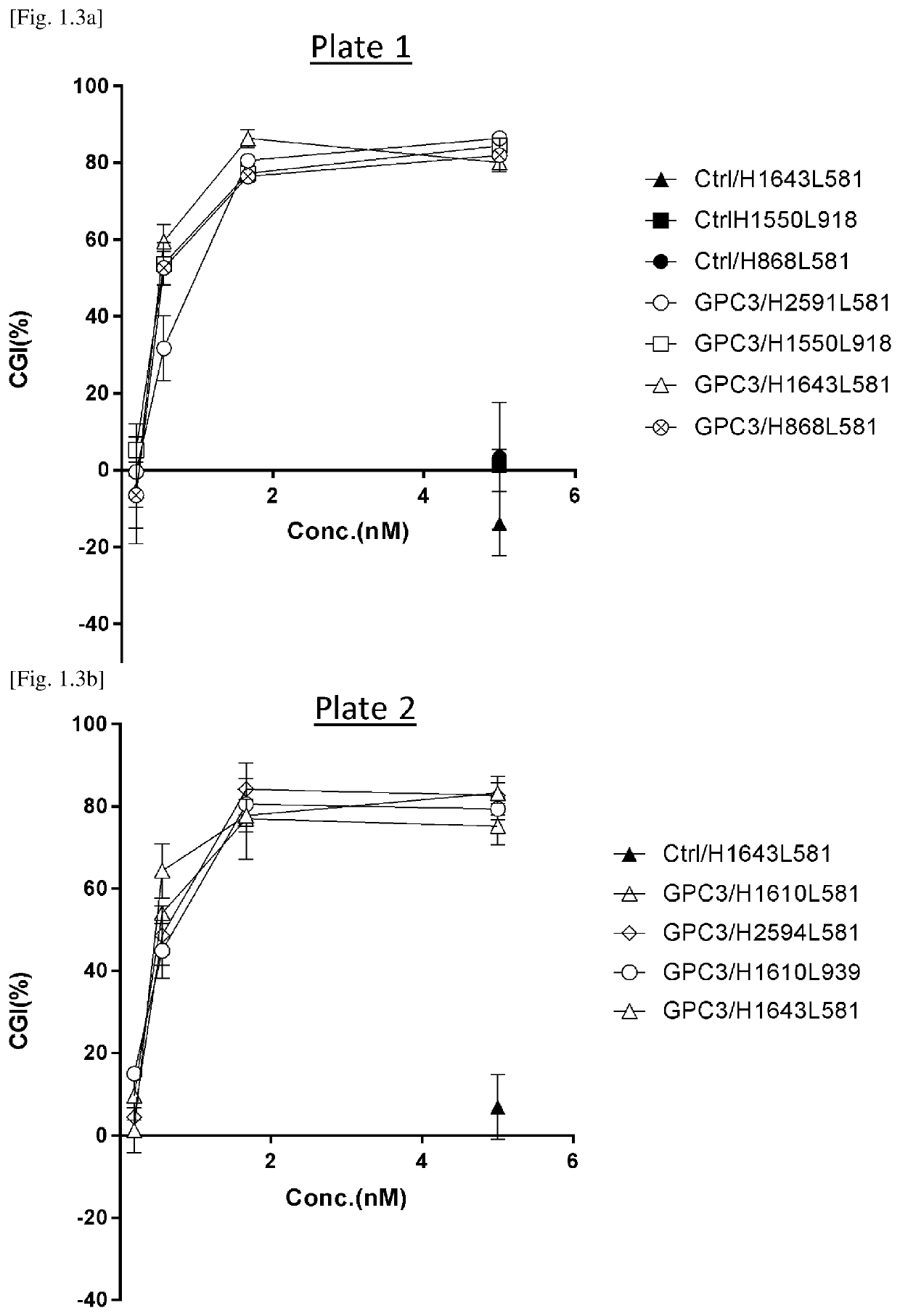Antigen-binding molecules capable of binding cd3 and cd137 but not simultaneously
a technology of cd3 and cd137, which is applied in the field of antigen-binding molecules that can not be used simultaneously, can solve the problems of antibody, however, failing to act on two immunoreceptors, and difficult systemic administration of trifunctional antibodies, so as to improve the survival and differentiation of t cells, strengthen the immune response, and induce cytotoxicity.
- Summary
- Abstract
- Description
- Claims
- Application Information
AI Technical Summary
Benefits of technology
Problems solved by technology
Method used
Image
Examples
example 1
[Example 1] Affinity Matured Variant Screening Derived from Parental Dual-Fab H183L072 for Improvement in In Vitro Cytotoxicity on Tumor Cells
[0428]1.1 Sequence of Affinity Matured Variants
[0429]To increase the binding affinity of parental Dual-Fab H183L072 (Heavy chain: SEQ ID NO: 1; Light chain: SEQ ID NO: 57), more than 1,000 Dual-Fab variants were generated using H183L072 as a template by introduce single or multiple mutations on variable region. Antibodies are expressed Expi293 (Invitrogen) and purified by Protein A purification followed by gel filtration, if gel filtration is necessary. The sequences of 15 represented variants with multiple mutations are listed in Table 1.1 and 1.2 and binding kinetics are evaluated in the Example 1.2.2 at 25 degrees C. and / or 37 degrees C. using Biacore T200 instrument (GE Healthcare) described below. Fold of affinity changes towards human CD137 and human CD3 by single mutations on variable regions are listed in Table 1.3.
TABLE 1.1aSEQ ID NOs...
example 2
[Example 2] Evaluation of In Vitro Cytotoxicity by Affinity Matured Variants Derived from Parental Dual-Fab H183L072 on Tumor Cells
[0439]2.1. Assessment of CD3 Agonistic Activity of Affinity Matured Variants In Vitro
[0440]To evaluate CD3 agonistic activity as a result of affinity maturation, NFAT-luc2 Jurkat luciferase assay is conducted. Briefly, 4×103 cells / well SK-pca60 cells (reference Example 13) which express human GPC3 on the cell membrane, was used as target cells and co-cultured with 2.0×104 cells / well of NFAT-luc2 Jurkat cells (E:T ratio 5) for 24 hours in the presence of 0.02, 0.2 and 2 nM of tri-specific antibodies.
[0441]Variants were divided into plate 1 in FIG. 1.1 upper panel and plate 2 in FIG. 1.1 lower panel. 24 hours later, luciferase activity was detected with Bio-Glo luciferase assay system (Promega, G7940) according to manufacturer's instructions. Luminescence (units) was detected using GloMax(registered trademark) Explorer System (Promega #GM3500) and captured...
example 3
[Example 3] Evaluation of Off-Target Cytotoxicity of GPC3 / CD3 / Human CD137 (2+1)
[0458]Tri-specific antibodies and Anti-GPC3 / Dual (1+1) Tri-specific antibodies.
[0459]3.1. Preparation of Anti-GPC3 / CD137×CD3 (2+1) Trispecific Antibodies
[0460]To investigate target independent cytotoxicity and cytokine release, tri-specific antibodies were generated by utilizing CrossMab and FAE technology (FIGS. 2.1 and 2.2). Tetravalent IgG-like molecule, Antibody A (mAb A) which of each arm has two binding domains resulting in four binding domains in one molecule was generated with CrossMab as mentioned above. Bivalent IgG, Antibody B (mAb B) is the same format as a conventional IgG. Fc region of both mAb A and mAb B is Fc gamma R silent with attenuated affinity for Fc gamma receptor, deglycosylated and applicable for FAE. Six tri-specific antibodies were constructed. The target antigen of each Fv region in six trispecific antibodies is shown in Table 2.1. The naming rule of each of binding domain of m...
PUM
| Property | Measurement | Unit |
|---|---|---|
| equilibrium dissociation constant | aaaaa | aaaaa |
| pH | aaaaa | aaaaa |
| pH | aaaaa | aaaaa |
Abstract
Description
Claims
Application Information
 Login to View More
Login to View More - R&D
- Intellectual Property
- Life Sciences
- Materials
- Tech Scout
- Unparalleled Data Quality
- Higher Quality Content
- 60% Fewer Hallucinations
Browse by: Latest US Patents, China's latest patents, Technical Efficacy Thesaurus, Application Domain, Technology Topic, Popular Technical Reports.
© 2025 PatSnap. All rights reserved.Legal|Privacy policy|Modern Slavery Act Transparency Statement|Sitemap|About US| Contact US: help@patsnap.com



